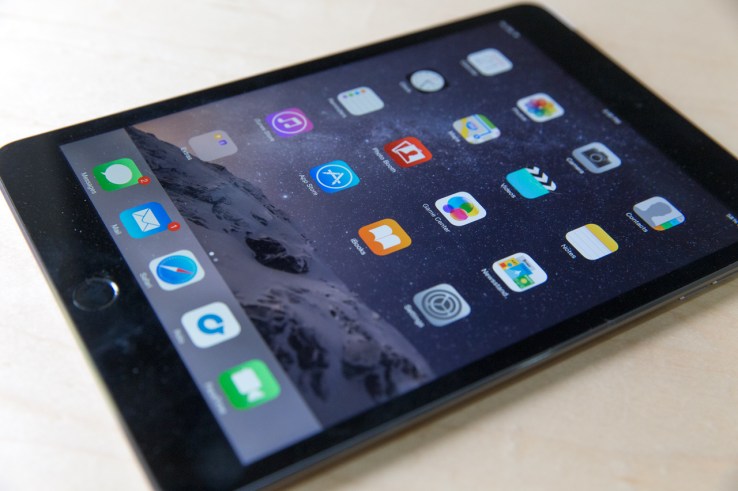
Volkswagen’s head brand ambassador Herbert Diess quickly got the emissions fiasco apologies out of the way on stage at CES on Tuesday and then unveiled two connected and all-electric concept cars of the future, the e-Golf Touch and the much-anticipated Budd-e microbus.
Diess was in the running for VW CEO shortly after Martin Winterkorn resigned in fall 2015, amidst a revelation the German car manufacturer had deliberately placed emissions-cheating software in more than 500,000 vehicles sold in the United States. Matthias Muller is now the company’s CEO.
The U.S. government filed a lawsuit against Volkswagen on Monday in Detroit, Michigan. Diess took to the stage at the Cosmopolitan’s Chelsea Theater in Las Vegas this evening to address the situation.
“The current issue for diesel engines is certainly nothing to be proud of. We disappointed our customers and the American people. We are truly sorry and I apologize. We are disappointed that this could happen within the company we love. I assure you, we are doing everything we can to make things right. And we are working night and day to find effective technical remedies for our customers and the authorities worldwide. In total, up to 11 million VW group cars are affected by this issue. For the large majority of these cars, we have already worked out approved solutions. In Europe, this holds true for about 8.5 million affected cars. Resolutions have been ratified by the European authorities and we will start to repair these cars this month. Most of them will be fixed within 2016. Here in the US, the set of regulations is different compared to Europe. It’s more demanding due to nitrogen oxide and less demanding due to CO2. We’re working hard to create an effective package for the US authorities.”
Diess then proceeded to wow the crowd with the concept cars – both of which focus heavily on some digital touches Volkswagen hopes will give the company a good foothold in the connected car race.
The Budd-e, a pint-sized version of the company’s legendary hippie van looked almost Tron-like as it glowed in the dark onstage – as if to let us know we’re now in the future. It also stayed true to what seems to be the automotive theme of CES this year – connection to everything on command. The Budd-e will let you know if a visitor is at the front of your house, what’s in your fridge and “make sure your robot cleaner is ready” before you get home, according to one LG exec who came onstage during the presentation.

The car is also equipped to handle package pickup and delivery with a built-in drop box in the back where a delivery person can drop off and pick up packages wherever your car is parked.
Budd-e also seems to be adherent to “the force.” The handleless car doors will automatically open at the command of your voice. Diess demonstrated this onstage as the driver inside said politely, “Hello Budd-e, please open the passenger door.”
The e-Golf Touch is an updated version of the Golf R Touch concept car Volkswagen showcased last year. But this one is electric, comes with a 9.2-inch touchable dashboard resembling an iPad, and is compatible with Apple CarPlay, Android Auto, and MirrorLink.
One of the cool things about the e-Golf is the personalization. Different drivers can set preferred driving features in the cloud and upload them onto the tablet dashboard.
Gestures like the waving of your hand can control things like volume and the e-Golf is WiFi enabled and equipped with phone charging outlets in the front and rear seats of the car. Should no Internet connection be available, the car is also equipped with a USB Type-C port.
The presentation also touched on a strong theme among many car manufacturers at CES this year – automated driving. “Volkswagen is rapidly entering the digital world, utilizing machine learning and mapping,” Diess told the crowd.

Note VW bought HERE, one of the largest digital mapping companies, last summer.
The company also unveiled a partnership with Mobileye, a vision technology company with an advanced driver assistance system that helps boost cars to a near self-driving experience.
“The human eye is really complicated and it’s really hard to replicate,” Co-founder and CTO of Mobileye Ammon Shashua said onstage at the VW event. “In the future we’ll live in a digital world…the camera will continue to be a critical sensor.”
A big theme for both cars was clearly about connection, but the Budd-e was definitely about the design. The car and the home cross-pollinate well in VW’s vision for the future Internet of Things, be it on the road or in the cloud and Volkswagen’s CEO indicated that these futuristic rides “could be a reality by the end of the decade.”
“The car of the future will make a difference. It will make our world a better place and Volkswagen will make sure most people can afford it,” Diess said.
He ended his speech with a return to what his company plans to do to make things right with the U.S. market. “We’re doing everything we can to work on the current diesel issue in the U.S.,” he said. “We’re working very hard to do so and confident we will provide solutions very soon.”











